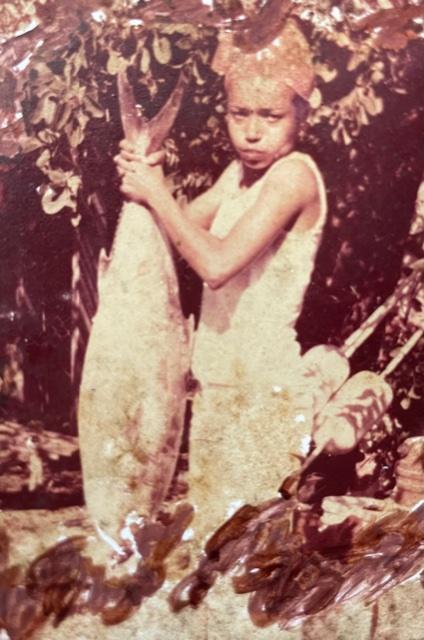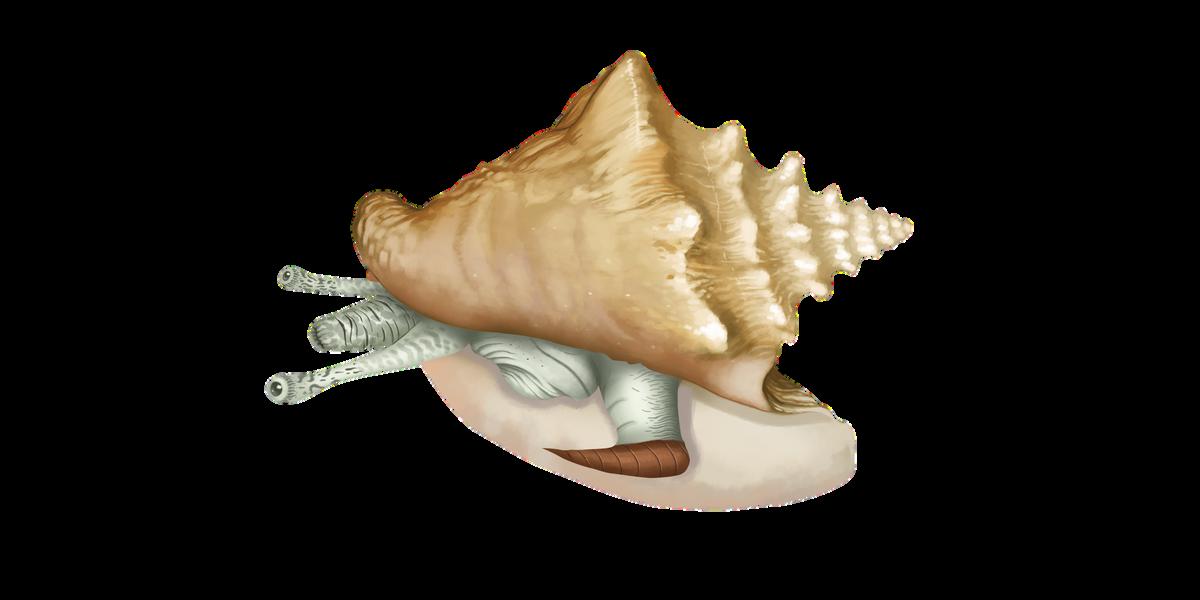NOAA FISHERIES NOAA FISHERIES HABITAT MONTH HABITAT MONTH
By Dr Álida Ortiz SotomayorNOAA Fisheries celebrated Habitat Month in July! The theme of this celebration is "Connecting Habitat, Climate, and Communities”. Getting to know the coastal and marine habitat allows us to conserve and use them sustainably, and understand the importance of fisheries management actions in our Caribbean region.

The Essential Fish Habitats that we have already discussed in previous bulletins: estuaries, mangroves, seagrass beds and coral reefs are all connected among themselves through the different species and the marine currents. This connection is an important characteristic that we all must understand to implement a successful management of the fisheries resources.
 Restoration efforts in the Jobos Bay National Estuarine Research Reserve (JBNERR).
Photo: Milton Muñoz Hincapié
Restoration efforts in the Jobos Bay National Estuarine Research Reserve (JBNERR).
Photo: Milton Muñoz Hincapié
Besides the extreme weather conditions and climate change that affect these habitats and the natural marine species living there, the impacts of the human actions are as important, specially through the activities that take place in the shoreline and inland Some of these, such as coastal development, pollution, and other actions, leading to reduced fish populations have negative impacts on the fish habitats.

It is important to implement habitat restoration projects to restore and protect the safety and well-being of coastal communities. These may be the restoration of impacted mangroves, seagrass beds, buffering shorelines from erosion, reducing flooding, and removing potentially hazardous structures. Restoring healthy habitats can help protect these communities from damage caused by extreme weather.

Down below, we show some restoration efforts in Puerto Rico. In the next bulletin, we will share examples of restoration initiatives in the USVI.
Habitat restoration efforts are conducted by the San Juan Bay Estuary Program: #EstuarioRevive. They planted nearly 3,000 red mangrove seedlings in the Condado Lagoon and other areas after destruction of mangrove by Hurricane María in 2017. Also, they have intensified the water quality monitoring program to detect septic pollution.

The Jobos Bay National Estuarine Research Reserve (JBNERR) is working in the restoration of critical mangrove and seagrass habitats at the Reserve, as well as efforts to educate the public on the importance of carbon mitigation and build scientific capacity to do similar work in the future.

Protectores


Resilience

It is a schooling species that generally inhabits not far from the coast, in coastal marine and brackish waters. Juveniles are often found in association with floating Sargassum, often entering lagoons and estuaries. This fish moves to deeper waters as an adult. It spawns offshore. Color varies from bluish green to olive green dorsally, becoming silvery grey to brassy below.





Caribbean woman, born and raised in St. Thomas and deeply attracted by the sea since very young. She is Ruth Gomez, a very well known person by the fishers in the USVI and a recreational fisher herself during her leisure time.


Ruth devoted over 30 years to the Division of Fish and Wildlife (DFW) of the USVI Department of Planning and Natural Resources (DPNR) She is the only person ever to have started in the Environmental Specialist Trainee position and become the Director, twenty plus years later.
Her experience with the agency dates back to a summer when, being a 14-year-old teenager, worked for the Youth Conservation Corps under the Department of Conservation Cultural Affairs (renamed the DPNR)/ Fish & Wildlife section That summer, she knew that she had found her labor of love.

The sea was her office in the late 80s. During those years, she took a break from the DFW and became the first Virgin Islands born female law enforcement Park Ranger.
“I enjoyed being on the ocean and enforcing the law,” Ruth said. After some time working as a Park Ranger, she missed DFW and returned to work there. The DFW is home for her.
“It did not take much convincing on Dr. Beets’ part to convince me to return to DFW in 1991. Tagging migratory seabirds, building fish aggregating devices, educational outreach and port sampling are some of the many experiences I treasure. I worked with and learned a lot from some solid and genuine people Some I now consider close friends,” Ruth expressed.

Over the years, her passion for the sea and fishing grew. The experiences that she obtained and the people around her were key in this process.
“I was fortunate to have supervisors that wanted to teach and made my love for the Virgin Islands fishery what is today (Mr. Joseph LaPlace (deceased), Dr. James Beets, Dr. Richard Dewey, Kenneth Turbe, Dr Tundi Agardy and Dr. David Olsen). I thank them and they hold a special place in my heart,” Ruth shared about her years in the DFW.

Besides having great professionals working along with her, since Ruth was a child, she was surrounded by people that also enjoyed fishing. Currently, she fishes recreationally in local tournaments. “Growing up, I spent a lot of my recreational time with children of French families. I sailed sunfish sailboats, fished and enjoyed the ocean with them. As my duties at Fish & Wildlife shifted toward fisheries (i.e., port sampling, fish trap studies) those friendships grew even stronger. As the trust developed between myself and the fishers, my passion to want to protect the fishers and the USVI fishery grew as well.

Let me be clear, I will shout from the highest mountain… I AM PRO fishermen and fisherwomen,” Ruth reaffirmed. She also explained that although nobody fishes in her family, her brother is a licensed captain and loves sailing, and her father (deceased) passed her the love for the sea.

This love is translated into a life devoted to management and conservation of the fisheries resources Ruth recognizes the complexities and challenges in fisheries management and, at the same time, highlights the relevance of validating fishers’ voices and ensuring their inclusion in the decision making processes. “Fishers need to consistently let their voices be heard and demand to be a part of the process as mandated by National Standard #8 in the Magnuson-Stevens Fishery Conservation & Management Reauthorization Act,” Gomez pointed She also recognizes that transparency is essential to maintain the trust and reduce conflicts.

“Management of the USVI fishery is heavy handed. Some rules and regulations were implemented 20 plus years ago. It is the responsibility of the regulatory agencies to qualify the effectiveness of existing law (i.e., Red Hind Marine Conservation District). Public policy (fisheries management) is defined as no person or government official can legally perform an act that tends to injure the public. The voids in the relationship between the fishers and the regulatory agencies will result in injury to the public (fishers and community). Management is only as good as its enforcement. I see a need to address the inefficiencies on both state and federal level,” Ruth explained. She is a member of the St Thomas/St. John Fisheries Advisory Committee (DPNR).
Gomez is also part of the St. Thomas/St. John District Advisory Panel and the Outreach and Education Advisory Panel in the CFMC. She serves as Public Relations Officer for the St. Thomas ‘ s Fishermen’s Association, too.
As a member of these panels and organizations, she always looks to offer her input and contribute to a better long-term management and the dissemination of information that provides a better understanding of the fisheries. Ruth recognizes that changing people’s mindset is difficult, but possible. For her, sitting down with a diverse group of committed individuals is hope for the future of the fishery, a future that also depends on the inclusion of younger fishers and the education of the masses on fisheries issues.

“The main lesson learned from the fishers is that fishing is not just a way of life, it is an integral part of our culture. The fishers have never hesitated to share their livelihood with me or anyone with good intentions. Every interaction is a teaching moment.
As a member of various fishery committees, I must continue to fight to keep the fishery healthy and the craft of fishing alive,” Ruth explained while also highlighting that women ’ s participation is crucial for the success of fisheries matters
“I think the best thinkers and people of action are women. I believe as women nothing has come easy to us. The women I have met in the resource management field are all dynamic. They took their feminine feet and kicked the masculine hinges off the field of resource management doors. I enjoy making it a point to always be heard. I am EXTREMELY proud to be a black woman born in the US Virgin Islands. Protecting the fishers and marine industry brings me joy As the Director, it was always a struggle not to let private citizen Ruth Gomez get in the way of my responsibility to the Government of the USVI.






